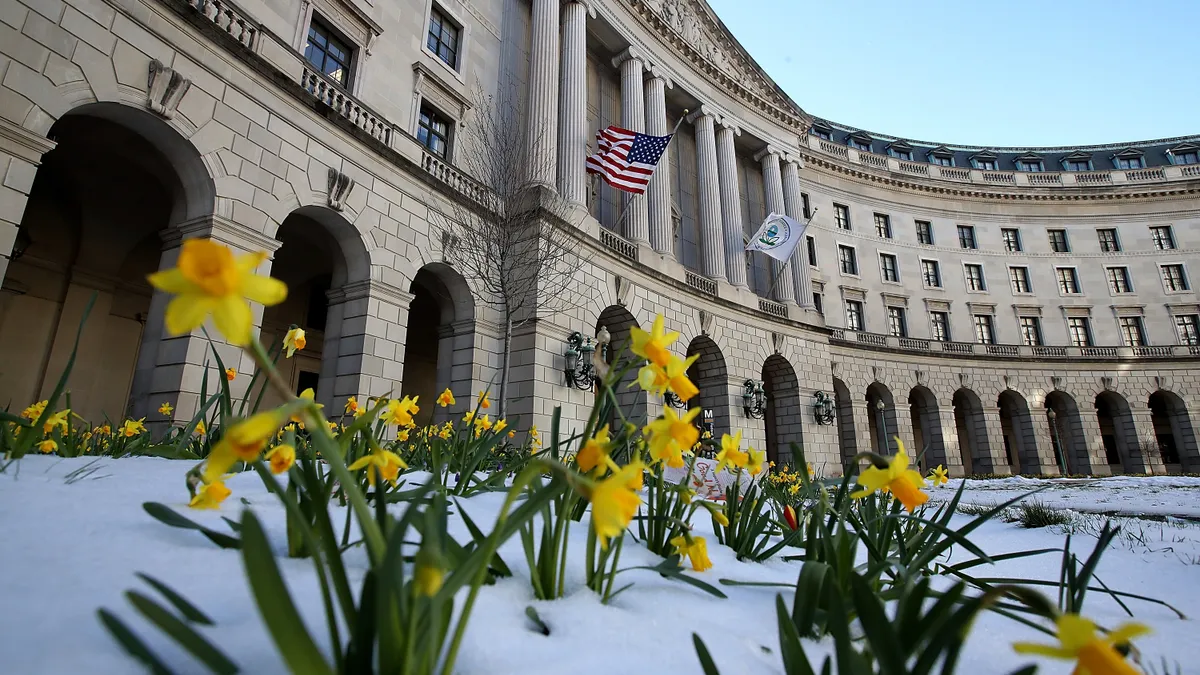When it comes to solar power policy, the line from “Field of Dreams” is worth taking into account: “Build it, and they will come.”
Demand for residential or rooftop solar power, spurred in part by state incentives, is growing rapidly. But if incentives are not well-designed, they can overwhelm a state’s budget.
Regulators and utility officials in several states have been surprised – not always in a positive way – by the effects of their solar power policies.
Louisiana is one of the more recent, and more dramatic, examples.
In mid-July, Louisiana’s Department of Revenue said it was almost $30 million short of funds to pay already submitted claims for rooftop solar systems and that there were no funds to pay future claims, even though the program is not scheduled to end until Dec. 31, 2017.
A 2015 law capped the state’s solar tax credit program at $10 million each for 2015-16 and 2016-17 and at $5 million for 2017-18. The state already has $9.3 million in approved credits and $29.6 million in estimated pending claims for 2015-16.
The credit, put in place in 2008, was one of the more generous among state solar tax credits, covering 50% of system costs and capped at $25,000 for an individual system.
That credit has been one of the drivers of solar power in Louisiana. According to the Solar Energy Industries Association, 32 MW of solar power – almost all of its residential – was installed in Louisiana in 2015, a 3% increase over the previous year, and the trade organization expected another 208 MW of installations over the next five years.
Industry experts say part of the reason Louisiana implemented such a generous 50% tax credit was as an effort to compensate for a residential rate structure that did not make solar power attractive.
Louisiana has a declining block rate structure, meaning that the first increment or tier of power used costs the most, with rates then dropping for customers who use more electricity.
In states like California, which has an inclining block rate structure, customers who use the least electricity pay the lowest rates. That structure creates an incentive for customers in the higher tiers to install solar panels in order to reduce their usage and rates. In states, such as Louisiana, with a declining block rate, that rate reduction strategy is not as compelling.
Louisiana’s solar tax credit also had a provision that allowed a cash payment for customers who did not have enough income to use all their credits. The state’s incentives were very attractive, but when lawmakers moved to rein them in, they went as far to the other side, reducing the cap while the program was still under way and by making the reduction retroactive.
Those sort of policy decisions, and resulting market disruptions, are becoming increasingly common nationwide.
Tax credits fuel Western solar boom
The sudden removal of Louisiana’s tax credits may have made things worse for homeowners there, but it is not the only state where booming solar power is creating problems in the state capital.
New Mexico has also ended its solar tax credit. The state implemented its tax credit in 2008 with a 2016 sunset date. But the state set a $3 million a year cap on the program, and has hit that limit in each of the last four years, according to Mark Gaiser, a clean energy program manager with the state’s Energy, Minerals and Natural Resources Department.
“New Mexico’s tax credit has been running out of money every year at a faster and faster pace,” said Noah Long, western energy project director with the National Resources Defense Council.
There have been two attempts to bring the tax credit back, but both have failed in the legislature. And, with the lower house of the legislature controlled by Republicans and the upper house controlled by Democrats, the chances of passing a new solar tax credit into law are slim, Long said.
In retrospect, it looks like putting a cap on the program “was kind of wise,” Gaiser said. “It didn’t allow for over reach.”
Another western state is facing similar problems, but for now the solar tax credit program is still running in Utah, where solar power is booming.
The state saw 3,000 rooftop solar installations in 2015, and the Governor's Office of Energy Development expects to process 12,000 applications this year. If all those applications turn into installations, it would mean more rooftop solar would be installed in 2016 than in all prior years combined.
The boom has been driven by the falling costs of solar panels, as well as at least three different state solar incentives. In addition to a state solar tax credit, Utah has a net metering program and the state’s largest utility, Rocky Mountain Power, until recently offered a rebate on the cost of installing solar power.
The utility rebate was about 1.5 cents per watt of installed rooftop solar. The program was set up as a lottery under a five year program and was very popular. Over four years, the utility provided $40 million in rebates.
But in March the state legislature signed off on Rocky Mountain Power’s proposal to end the program in its fourth year and switch it to a broader initiative, the Sustainable Energy and Transport Program, which includes incentives for transportation and energy storage, as well as for solar power.
“We think the solar industry is no longer an unknown quantity,” Rocky Mountain Power spokesman Paul Murphy said. “So, we don’t think it needs additional incentives. We would rather use the funds for all customers.”
Utah also provides a solar tax credit equal to 25% of the cost of a system, capped at $2,000 per system. But the rapid growth of rooftop solar in the state is raising concerns among lawmakers.
When the tax credit was created in 2012, it was a $1 million program, this year it is going to hit $25 million or $40 million, Jeffrey Barrett, deputy director of the Governor’s Office of Energy Development, said. “The word ‘exponential growth’ was created for this sort of thing.”
“The legislature is extremely worried about the fiscal impact,” Barrett said. “I think new legislation is being drafted right now.”
What form that legislation will take is still unknown, he said. It could be a cap or a cap and a phase out, but “in the future, it will be a completely different program.”
By law, Utah’s the tax credit comes up for review in 2017.
State funding struggles a trend
Overall, the expiration of state solar tax credits has become a national trend.
“I think that it is due in part to budgetary problems, but also due to solar's increasing maturity,” Autumn Proudlove, senior policy analyst at NC Clean Energy Technology Center at North Carolina State University, said.
Many of the tax credit programs were put in place to help solar power get off the ground, but with the growing penetration of solar, some states are letting those programs expire.
At the beginning of 2015, 15 states had residential solar tax credits. Now, 11 states have them, and programs are set to expire in Iowa at the end of 2016, in Louisiana and Oregon at the end of 2017, and in Maryland at the end of 2018, according to the Database of State Incentives for Renewables and Efficiency (DSIRE).
In part this a reflection of the natural life span of a tax credit. Tax credits are often put in place to help a technology transit to commercial viability. In some states, legislators are letting them expire because they believe the technology has advanced far enough that tax credits are no longer necessary.
North Carolina is an interesting example, Proudlove said. The state tax credit really helped develop the state's utility-scale solar market, but the residential and commercial solar markets are still small and have really dropped off since the tax credit expired, she said.
According to a survey conducted by the Utah Solar Energy Association, 80% of the respondent said that the tax credit was “important” of “very important” in their decision to install solar panels on their rooves, Ryan Evans, president of the trade group said.
Reducing or capping Utah’s solar tax credit “would not send the right message right now,” Evans said. “After all, there are only so many Utahans. The boom can’t last forever.” Eventually everyone who wants solar power will have it or all the roofs will have solar panels, he said.
The other factor that needs to be considered, Evan said, is that tax credits bring in business. “My guess is that the state gets their money back” through increased sales tax and corporate taxes.
According to a report by the North Carolina Sustainable Energy Association, North Carolina energy projects generated $1.54 of state and local government tax revenue for every $1.00 taken in tax credit.
But, as Evans pointed out, “Not all tax credits are created equal.” And there is a fair amount of variety when it comes to solar tax incentives. California uses a tax exemption for solar equipment instead of a credit on a tax return. Other states also give an adjustment or deduction on property taxes, but can lead to problems.
Not only do property values change, they are very local, and “it is difficult for developers to know the value,” said Sean Gallagher vice president for state affairs at the Solar Energy Industries Association.
Gallagher noted that most tax credits are designed with sunset dates or budget caps. “It is not unusual for them to have a limit,”
In a well-designed system, there needs to be a recognition of the importance of planning, from the perspective of the state, as well as that of the homeowner and the developer. The simplest way to do that is to have a clear expiration date for the tax credit and clear definitions of qualifying factors such as construction start dates.
Other features, such as reserve funds and triggers, can also be helpful tools. They let consumers know when the credits are close to expiration or near capacity.
It's best to design programs with a budget cap or an expiration date, “people need to be able to plan for it,” Gallagher said. The worst thing to do, though, is to change the tax credit or lower the cap retroactively. In those situations people stand to lose their investment, Gallagher said.






















